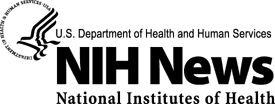 |
|
|
FOR IMMEDIATE RELEASE:
February 4, 2002 #02-03 04 Feb 2002: Impact of Attention Deficit-Hyperactivity May Be UnderestimatedThe public health impact of Attention Deficit-Hyperactivity Disorder may be greatly underestimated by school and public health officials, scientists at the National Institute of Environmental Health Sciences (http://www.niehs.nih.gov) said today. The NIEHS scientists and colleagues at the University of North Carolina School of Medicine (http://www.med.unc.edu/) "Treatment rates are usually viewed as abnormally high if they exceed the three to five percent prevalence estimate for ADHD cited in an American Psychiatric Association manual in 1994," the authors said. "Therefore, the national public health impact of ADHD may be greatly underestimated by both educators and public health officials." The information gathered from parents also indicated:
The study utilized parental and teacher reports of 6,099 children in 17 public elementary schools in the semi-rural county. Because Johnston County has a racial/ethnic and educational profile similar to North Carolina as a whole, the authors of the study said they feel that medication treatment rates are probably similar in many other counties in North Carolina and elsewhere. The researchers said similar data needs to be collected nationally to better understand ADHD medication treatment patterns. Authors of the study are Andrew S. Rowland, Ph.D.; Dale P.Sandler, Ph.D.; and David M. Umbach, Ph.D., of NIEHS, which is part of the National Institutes of Health but located in Research Triangle Park, N.C., near Johnston County; A. Jack Naftel, M.D., of the department of psychiatry, University of North Carolina School of Medicine, Chapel Hill; and Lil Stallone, M.P.H., and E. Michael Bohlig, both of the private research firm CODA of Silver Spring, M.D. and Durham, N.C. The research appears online in the February issue of the American Journal of Public Health, a publication of the American Public Health Association. The journal is accessible at http://www.apha.org/ (http://www.APHA.org) The principal investigator, Dr. Rowland, may be reached for interviews at (505) 272-1391.Dr. Sandler, the senior investigator, is available at (919) 541-4668. (Dr. Rowland is now with the University of New Mexico Health Sciences Center.) |
|


